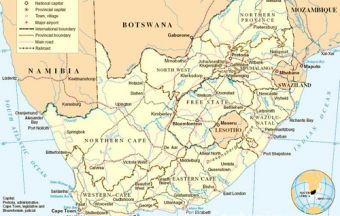The Cape of Storms
When in 1488 Bartolomeu Dias together with his crew “discovered” the southern part of Africa he named it The Cape of Storms. Why?
The southern coast of Africa, since the moment it was marked on the maps of the modern world, has become a special place for sailors. It has been the place where they can top up their supplies of water and food for the onward journey, repair their ships and regain their strength. The Cape of Good Hope, be it for the name itself, has become a synonym of faith in success and a happy end of to hardships encountered during a voyage. However, the first Europeans to reached this place had different feelings about the place. Bartolomeu Dias, who in 1488 “discovered” this piece of land stretching into the sea, named it The Cape of Storms, because it was how he saw it. He did not realize at that point that, by reaching so far and by blazing a sea trail to the southern ends of Africa, he contributed to the discovery of the sea route to India.
Voyages at that time were nothing but expeditions into the unknown. The maps did not reflect reality as we know it today and the Copernican revolution was to happen only in the next century. It is no wonder, then, that Bartolomeu Dias could only have suspected that any southern passage might exist. And still it was a very bold hypothesis in the light of the knowledge of that time, as according to Ptolemy’s maps, which were in common use, the southern part of Africa was connected to an unknown land called Terra Australis Incognita. Hence, there is nothing strange in the “dilemmas” of the medieval explorer, which seem to be quite amusing from a contemporary point of view.
During a storm, his ship sailed dangerously westwards, away from the African coast. Dias and his crew greatly feared that they may fall off the edge of the world, so, when the storm subsided, they sailed eastwards. However, after many days of sailing, they still couldn’t see the coast of Africa. It turned out that they had sailed too far to the south and, in order to reach the coast of the continent, they had to sail back north.
The Cape of Storms was recognized by the explorer as the furthest southern end of Africa. Yet the sailor was mistaken. The western coast of the peninsula, on the end of which the cape is located, spreads along the waters of the False Bay. Its name originated from the fact that Bartolomeu Dias thought it was the ocean and hence came to the conclusion that there was no land ahead. Actually the most southerly point, Cape Agulhas, is located some 160 kilometres to the southern-east of the place where Bartolomeu Dias’ crew found themselves.








.jpg) Lighthouses and the story of the...
Lighthouses and the story of the...
 The Cape of Storms
The Cape of Storms